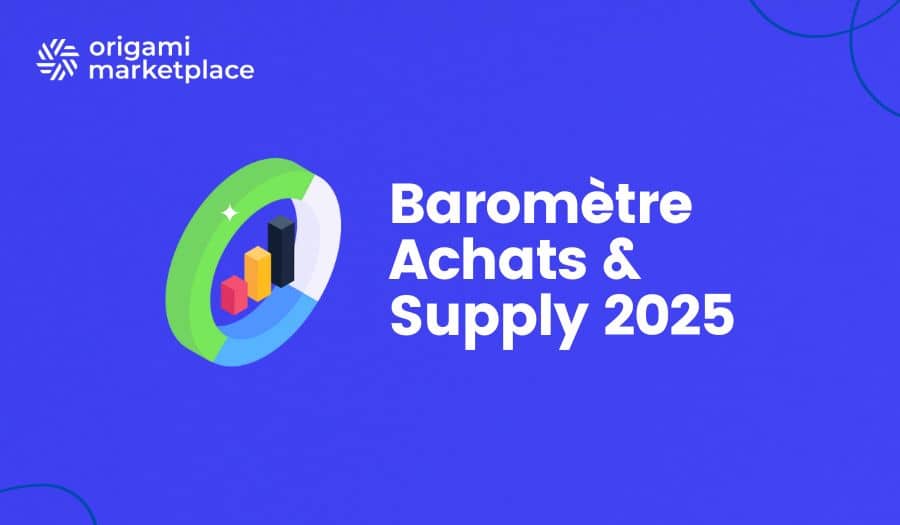Marketplaces explained: Definition, types, and economic models
- Arnaud
- 7-minute read

Marketplaces, or online marketplaces, have revolutionized the way we buy and sell products and services on the internet. These platforms facilitate connections between sellers and buyers, simplifying commercial transactions and offering new opportunities for businesses of all sizes.
In this article, discover the definition of a marketplace, how it works, the existing typologies, as well as the steps to create a marketplace and ensure its success.
👋 No time to read the entire article? Find the summary here.
1. What is a Marketplace?
A marketplace, or market place, is an online platform where sellers professionals or individuals offer their products or services to buyers. This model is based on an intermediation system: the platform acts as an intermediary facilitating transactions, often in exchange for a commission or fixed fees.
Key characteristics of a Marketplace:
- Intermediation: Connecting multiple sellers with multiple buyers.
- Varied Economic Model: Commission on sales, subscription, listing fees, etc.
- Flexibility: Sellers can be individuals or professionals.
- Examples: Amazon, Biked, Etsy, Vinted, Airbnb, or Cdiscount.
Some marketplaces offer additional services such as logistics management (storage and shipping) or advanced marketing tools for sellers, or can even serve as purchasing centers like the Orpi group.
2. Marketplace vs. E-commerce: What are the differences?
Let’s explore the difference between the concepts of e-commerce (electronic commerce) and marketplace, two terms often used in the world of online commerce but which designate two very distinct models. Although both platforms aim for the same final goal marketing products and services via the internet their operating modes have notable differences:
- In the context of e-commerce, the transaction occurs directly between the seller and the buyer. Typically, the owner of the e-commerce site is also the seller of the offered products or services. This model can be likened to an online store, where the purchase process is conducted directly between the merchant and the consumer.
- In contrast, the marketplace incorporates a third participant in the sales process: the platform itself, which acts as an intermediary between sellers and buyers. This structure is comparable to a virtual shopping mall, grouping under one digital roof a diversity of brands and independent merchants.
| Criteria | E-commerce | Marketplace |
|---|---|---|
| Participants | One seller and one buyer | Multiple sellers and buyers |
| Structure | Single-vendor online store | Virtual shopping mall with multiple vendors |
| Role of the platform | Direct seller of the products offered | Intermediary facilitating transactions |
| Examples | Zara.com, Patagonia.com | Amazon, Airbnb, Rakuten, Decathlon.fr |
Download our free requirement specification template
Access essential functionalities to successfully build your C2C, B2C, or B2B marketplace. This simple-to-use backlog template will support you at every project stage.

3. How does a Marketplace work?
The functioning of a marketplace revolves around three essential pillars: the operator of the platform, the sellers, and the buyers. Each of these actors plays a crucial role in the marketplace ecosystem, contributing to its dynamism and success.
- First pillar: The Marketplace Operator
The operator is the beating heart of the platform. They launch and manage the site, ensuring it is both secure and user-friendly. Their main mission is to create an environment conducive to commercial exchanges by providing tools and services that facilitate interactions between sellers and buyers. They must inspire trust, regulate supply and demand, and ensure the quality of the products offered. The operator also works to make the site attractive and to optimize the user experience by offering advanced features for managing promotions, orders, and inventory.
- Second pillar: The Sellers
Sellers are the suppliers of the products available on the marketplace. They seek to expand their customer base and boost their turnover thanks to the visibility offered by the platform. The marketplace becomes an additional sales channel, accessible without the need for initial investment for those without an online presence, or a cost-reduction opportunity for those already active in e-commerce. Sellers take advantage of the marketplace’s infrastructure and clientele to promote and sell their products more effectively.
- Third pillar: The Buyers
Buyers benefit from all the efforts deployed by the operator and the sellers. They access a wide range of products, can compare offers from numerous sellers on a single platform, and enjoy a simplified and secure shopping experience. The marketplace offers unparalleled convenience, allowing buyers to make purchases more informed and efficiently, thanks to a clear presentation of product features, prices, promotions, and reviews.
In summary, the marketplace creates an ecosystem where the operator, sellers, and buyers interact harmoniously to facilitate online commerce. Each actor contributes to the added value of the platform, making transactions both simpler and more advantageous for all.
The different types of Marketplaces
Marketplaces are categorized according to several criteria. Here is a detailed overview, enriched with concrete examples.
A. According to Participants: B2C, B2B, and C2C
- B2C Marketplace (Business to Consumer): These marketplaces connect professional sellers with individuals. They represent the most widespread model. Consumers benefit from a vast range of products or services, while businesses access a broader audience without massively investing in online infrastructures, like La Redoute, Cdiscount, or the MAIF Social Club launched by MAIF.
- B2B Marketplace (Business to Business): Intended for transactions between businesses, these marketplaces facilitate connections between professional buyers and sellers. They often allow companies to optimize purchasing processes, such as sourcing raw materials or managing supplier relationships, like Alibaba, Amazon Business, or the French Tennis Federation with Proshop FFT for its members.
- C2C Marketplace (Consumer to Consumer): These platforms allow individuals to sell or rent goods among themselves. Often associated with the collaborative economy, they offer unmatched flexibility for transactions of second-hand products or shared services, like Vinted, Leboncoin, or Preppy Sport in the equestrian world.
B. According to the Diversity of the Offer: Horizontal and Vertical
- Horizontal Marketplace: bring together a variety of products or services from numerous categories. The goal is to offer the widest possible selection to attract a diverse audience, like Amazon (books, clothing, electronics), eBay, or Auchan.
- Vertical Marketplace: specialize in a specific category or sector, with in-depth expertise and a highly targeted offering. This model often attracts customers seeking specialized products or a refined shopping experience, like ManoMano (DIY) or Doctolib (healthcare).
C. According to the Nature of Goods: Products and Services
- Product Marketplace: These platforms commercialize physical products (new or used) or digital products (e-books, music, online courses). They focus on the transaction and sometimes on logistics management, like Etsy, Vide Dressing, or OpenClassrooms.
- Services Marketplace: This model offers intangible services, such as transportation, consulting, or accommodation. These platforms include specific features: geolocation, availability management, user reviews, like Uber (transportation).
5. The economic models of Marketplaces
The success of marketplaces relies on varied and flexible economic models, often adapted to the niche and targeted users. Here are the main approaches:
- Commissions, a sominant model: A commission is taken from each transaction made via the platform. This model is attractive for sellers because they only pay in case of a sale. Operators can adjust rates according to product categories or seasonality.
- Subscriptions, paying for access: Some marketplaces charge a recurring subscription to sellers, giving them access to features or increased visibility on the platform. This model suits sectors where transactions are complex or irregular.
- Listing fees: This system is common on marketplaces for classifieds or unique items. Sellers pay to list their products, with additional options to enhance their visibility.
- Lead Fees: Lead fees are applied when a connection is established, often used by services marketplaces or specific niches. This model is ideal for platforms where the volume of transactions is less significant, but the value of leads is high.
- Freemium model, attract to retain: The free version attracts as many users as possible, while paid options unlock advanced features.
- Advertising, a complementary revenue: Marketplaces also monetize their audiences with advertising offers, such as product promotion or highlighting stores.
"A successful marketplace relies above all on a clear vision and rigorous execution: identify a specific need, develop a differentiated offer, and always place the user experience at the heart of your strategy. Adopting a flexible approach in your economic model and staying attuned to market trends are essential to ensure the sustainability and competitiveness of your platform."

Alexandre Duquenoy
→ Talk to our solutions expert.
6. How to create a Marketplace?
Creating a marketplace requires careful planning, strategic choices in terms of technologies and economic models, and an appropriate budget. Here are the essential steps to follow:
1. Define Your Niche
The first step is to determine the niche you wish to target. A well-defined niche allows you to focus your marketing efforts and precisely meet the needs of a specific market segment. To do this:
- Market Demand: Identify an unmet need or an exploitable opportunity.
- Sector Knowledge: Assess whether you have expertise or specific knowledge in this field.
- Competition: Analyze its intensity and verify if there is room for a new player.
Identify a sector where demand is strong but supply is insufficient or poorly structured. Ensure you offer clear added value, whether in terms of price, quality, or simplicity.
2. Choose Your Economic Model
Determine how to monetize your platform based on the behaviors of sellers and buyers. Possible options include:
- Commissions: A percentage on each transaction.
- Subscriptions: Recurring billing for access to the platform.
- Listing Fees: A fixed amount for each product listed.
- Advertising: Revenue generated by ads.
3. Select a Technical Solution
Your technological choice is crucial for the flexibility and growth of your marketplace. Here are the main options available:
- A Turnkey SaaS Solution like Origami Marketplace: Quick to implement, offering a full range of integrated features.
- Custom Development: Ideal for ambitious projects requiring specific features but more costly.
- Extensions for CMS: Plugins for systems like WordPress; simple and economical but limited in scalability.
Consider your budget, technical skills, and long-term objectives to choose the most suitable solution.
4. Attract Your First Users (Sellers and Buyers)
Once the platform is ready, focus on attracting users.
For Sellers:
- Offer incentives like reduced fees or free premium features for early sign-ups.
- Highlight the advantages of your marketplace (increased visibility, simplified tools).
- Organize workshops or events to showcase the benefits of selling on your platform.
For Buyers:
- Optimize your SEO to generate organic traffic.
- Launch exclusive promotions or referral programs to stimulate initial purchases.
- Use social media and content marketing to build a community around your marketplace.
An exceptional user experience for both parties is essential to foster loyalty and positive word-of-mouth.
5. Comply with Regulations
- Secure payment system: Integrate a PSP like Stripe or MangoPay.
- Financial regulations: If your platform handles funds, verify the necessary licenses (Payment Institution, Electronic Money).
6. Define a Realistic Budget
The initial budget will depend on the complexity of your project:
- For a startup: Approximately €50,000.
- For a more ambitious project (Large groups): From €150,000 to several million euros.
To help you with this, you might be interested in our article: What is the cost of creating a Marketplace ?
Marketplaces play a central role in the digital economy, transforming interactions between sellers and buyers. With a clear strategy, appropriate technology, and a robust economic model, they offer infinite growth opportunities.
Ready to Get Started? Download one of our free resources below and start your project today.
Free resources:
Key Points to Remember from the Article:
- Definition: A marketplace is an online platform connecting sellers and buyers via an intermediation system.
- Differences with E-commerce: The marketplace acts as an intermediary and brings together multiple sellers, unlike a traditional e-commerce site that sells its own products directly.
- Typologies:
- By Participants: B2C, B2B, C2C.
- By Specialization: Horizontal (varied offer) or Vertical (specialized).
- Economic Models: Commissions, subscriptions, listing fees, advertising.
- Creating a Marketplace:
- Identify a niche.
- Choose an economic model.
- Attract the first users with incentives.
- Comply with regulations.
- Allocate an appropriate budget (starting from €50,000).
Discover how the Origami Marketplace API and its partner network can transform your business, regardless of its size, through its innovative marketplace-based solution.


